You’ve probably heard of Mount Vernon, Monticello, and Montpelier. But what about Wheatland, Grouseland, or FDR’s Little White House? Some presidential homes are more well-known than others. That’s why I decided to spend a few weeks researching and writing about all the presidential homes you can visit.
This definitive list, to the best of my knowledge, includes homes where presidents lived at one point in their life that you can visit. There are a lot of recreated homes at historic sites that I have left off this list because the presidents never walked those halls like you can. I also did not include the remnants of homes or foundations because there isn’t anything to see.
How many of these homes have you visited? Which would you like to visit next? Leave me a comment below!
Table of Contents
- Independence National Historical Park
- Mount Vernon
- Adams National Historical Park
- Monticello
- Poplar Forest
- Tuckahoe Plantation
- Montpelier
- The Hermitage
- Martin Van Buren National Historic Site
- Berkeley Plantation
- Grouseland
- Virginia Executive Mansion
- Sherwood Forest Plantation
- President James K. Polk Home & Museum
- Millard Fillmore Presidential Site
- Franklin Pierce Homestead Historic Site
- The Pierce Manse
- Wheatland
- Knob Creek Farm
- Lincoln Cottage
- Lincoln Home National Historic Site
- Andrew Johnson National Historic Site
- Mordecai Historic Park
- The Ulysses S. Grant Boyhood Home and School
- Ulysses S. Grant National Historic Site
- U.S. Grant Birthplace
- U.S. Grant Cottage State Historic Site
- U.S. Grant Home State Historic Site
- Rutherford B. Hayes Presidential Library & Museums
- James Garfield National Historic Site
- Grover Cleveland Birthplace State Historic Site
- New York State Executive Mansion
- Benjamin Harrison Presidential Site
- First Ladies National Historic Site
- Sagamore Hill National Historic Site
- Theodore Roosevelt Birthplace National Historic Site
- William Howard Taft National Historic Site
- The Boyhood Home of President Woodrow Wilson
- The President Woodrow Wilson House
- The Woodrow Wilson Family Home
- The Woodrow Wilson Presidential Library & Museum
- Harding Home Presidential Site
- President Calvin Coolidge Historic Site
- Herbert Hoover National Historic Site
- Hoover-Minthorn House Museum
- Rapidan Camp
- Home of Franklin D. Roosevelt National Historic Site
- Roosevelt’s Little White House
- Harry S. Truman Birthplace State Historic Site
- Harry S. Truman National Historic Site
- Harry Truman’s Little White House
- Dwight D. Eisenhower Presidential Library, Museum & Boyhood Home
- Eisenhower Birthplace State Historic Site
- Eisenhower National Historic Site
- John Fitzgerald Kennedy National Historic Site
- Lyndon B. Johnson National Historical Park
- Richard Nixon Presidential Library and Museum
- Georgia Governor’s Mansion
- Jimmy Carter National Historical Park
- Ronald Reagan Birthplace Museum
- Ronald Reagan Boyhood Home
- The George W. Bush Childhood Home
- Texas Governor’s Mansion
- Arkansas Governor’s Mansion
- President William Jefferson Clinton Birthplace Home National Historic Site
- The White House
Map of Presidential Homes
How to use this map: Click the icon in the top-left corner to open the Map Legend, then click on any of the legend items to display more information. If you have a Google account, click the star beside the map’s name to save this map to your account, then access the map from your smartphone during your trip.
Tips for Visiting Presidential Homes
Like most museums, hours change and special events change everything. It’s always a good idea to check the latest status of a presidential home before visiting. But, there are a few other tips that can help you make the most of your trip.
- Check their website for the latest information about visiting and temporary closures
- Many of the historic sites operate seasonally. Summer is the best time to visit to guarantee the site will be open.
- The best time of the week to visit smaller historic sites is the weekend. But the best time to visit larger sites like national historic sites and presidential libraries is the middle of the week.
- Schedule guided tours in advance to guarantee your spot on the tour
- Plan to spend several hours at these unique sites to see everything on display
- Research requests must be approved in advance
George Washington
Independence National Historical Park
The Germantown White House, built in 1752 in Philadelphia, Pennsylvania, sheltered George Washington twice during his life. In 1793 Washington went to the home to escape the yellow fever epidemic sweeping through Philadelphia, and the very next year he returned to escape a heat wave. Today visitors to the house can take a guided tour to see its original 18th century appearance and learn about the various other people who were once sheltered here.
526 Market Street, Philadelphia, PA | 215-965-2305 | www.nps.gov/inde/index.htm

George Washington
Mount Vernon
In 1734 Augustine Washington, the father of President George Washington, built a one-and-a-half story house on the banks of the Potomac River just south of Alexandria, Virginia. When George Washington took over the estate in 1754 he began a series of expansions, eventually finishing 50 years later with a 21-room mansion he called Mount Vernon. Visitors can take a guided tour of the mansion, walk through the gardens and historic areas on the grounds, and visit a recreation of the grist mill and distillery where Washington once made whiskey.
3200 Mount Vernon Memorial Highway, Mount Vernon, VA | 703-780-2000 https://www.mountvernon.org/
READ MORE: Everything You Need to Know to Visit George Washington’s Mount Vernon in Virginia
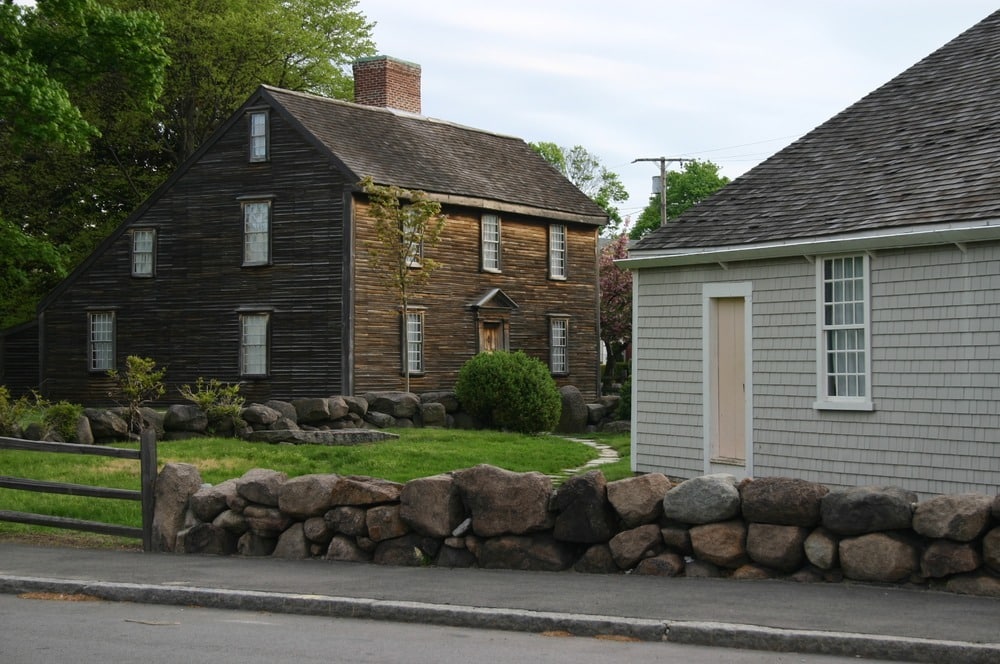
John Adams and John Quincy Adams
Adams National Historical Park
Two presidents were born on this historic property in Quincy, Massachusetts. The John Adams Birthplace is a two-story log structure built in 1681 and purchased by Adams’ father in 1720; in 1735 John Adams was born in the house. The John Quincy Adams House was built in 1663, ironically making it older than his father’s house, and in 1767 John Quincy Adams was born in the house. Visitors can take guided tours of both homes while also exploring the grounds and attending special events.
133 Franklin Street, Quincy, MA | 617-770-1175 | www.nps.gov/adam/index.htm

Thomas Jefferson
Monticello
At the age of 26 Thomas Jefferson inherited land from his father in Charlottesville, Virginia. Jefferson immediately set to design a plantation house he would later name Monticello, one of the most magnificent presidential homes in the country. Visitors to Monticello can take a guided tour of the house, explore exhibits at the museum, and explore the gardens.
931 Thomas Jefferson Parkway, Charlottesville, VA | 434-984-9800 | https://www.monticello.org/
Thomas Jefferson
Poplar Forest
In 1773, Thomas Jefferson’s wife, Martha, inherited a 4,819 acre plantation in Virginia called Poplar Forest. At first, Jefferson managed the plantation from his home in Monticello. But when the British invaded the area in 1781 during the Revolutionary War, he was forced to seek shelter at Poplar Forest. The octagonal house was built in 1806 and Jefferson would visit 3-4 times each year as a retreat to escape the constant flow of guests to Monticello.
Today, visitors can take a guided tour of the house and learn about the history of the plantation, explore Jefferson’s eclectic architecture, and learn about the things he did while visiting the retreat.
1542 Bateman Bridge Road, Forest, VA | 434-525-1806 | www.poplarforest.org
Thomas Jefferson
Historic Tuckahoe
From 1730-1740 the gorgeous plantation home was built by William Randolph and his wife Maria Judith Page in Richmond, Virginia. By 1745 the Randolph’s children were left orphaned when both William and Maria died. Shortly after William’s death his good friend Peter Jefferson arrived to tend to the children, bringing with him his own two-year-old son Thomas Jefferson. Today the home is a popular wedding venue, but visitors can still take guided tours of the house and self-guided tours of the grounds during “open hours”.
12601 River Road, Richmond, VA | 804-774-1614 | http://tuckahoeplantation.com/
James Madison
Montpelier
In 1764 President James Madison, just a boy at the time, helped his family move into their new home at Montpelier in Orange, Virginia. Built by his father, James Madison, Sr., the house underwent several expansions over the next forty years. When President James Madison left office after his second term in 1817 he retired to Montpelier until his death. Visitors can take a guided tour of the house, walk the miles of trails across the grounds, and explore galleries in the museum.
11407 Constitution Highway, Montpelier Station, VA | 540-672-2728| https://www.montpelier.org/
Andrew Jackson
The Hermitage
Located in Nashville, Tennessee, The Hermitage is one of the most impressive presidential homes to visit in the country. In 1804 Andrew Jackson purchased 425 acres of farmland. Initial construction on the plantation house began in 1819 and lasted through several phases over the years. Aside from his time serving as president, Jackson lived at The Hermitage until his death in 1845. Today visitors to the sprawling estate can take a guided tour of the mansion, walk through the gardens, and visit many of the other historical structures.
4580 Rachel’s Lane, Nashville, TN | 615-889-2941 | https://thehermitage.com/
READ MORE: Discover a President’s Boyhood at Andrew Jackson State Park in Lancaster, SC
Martin Van Buren
Martin Van Buren National Historic Site
In 1839, while serving as president of the United States, Martin Van Buren purchased a grand thirty-six room mansion in Kinderhook, New York. In 1841 after he failed to win a second term as president, losing to William Henry Harrison, he moved into the house, which he named Lindenwald, and remained until his death in 1862. Today visitors can take a guided tour of Lindenwald and learn about his presidency and life on the property in the late 1800s.
1013 Old Post Road, Kinderhook, NY | 518-758-9689 | www.nps.gov/mava/index.htm
William Henry Harrison and Benjamin Harrison
Berkeley Plantation
In 1726 this gorgeous Georgian style mansion was built by Benjamin Harrison IV at Berkeley Plantation in Charles City, Virginia. In 1773 William Henry Harrison, the 9th president of the United States, was born at Berkeley Plantation. Then, in 1833, the 23rd president of the United States Benjamin Harrison was born in North Bend, Ohio, and later lived in this same plantation house. Visitors to Berkeley Plantation can take a guided tour of the mansion with guides dressed in period costumes and take self-guided tours of the grounds.
12602 Harrison Landing Road, Charles City, VA | 804-829-6018 | www.berkeleyplantation.com
William Henry Harrison
Grouseland
When William Henry Harrison was appointed governor of the Indiana Territory in 1800 he purchased 300 acres along the Wabash River in present-day Vincennes, Indiana, and built a governor’s mansion. Modeled after his Berkeley Plantation home in Virginia, Grouseland was the first brick building in Indiana. Also called the “White House of the West”, Harrison used the home to sign several treaties with Native Americans during his presidency. Today visitors can take a guided tour of the mansion and freely walk the grounds.
3 West Scott Street, Vincennes, IN | 812-882-2096 | www.grouselandfoundation.org
John Tyler
Virginia Executive Mansion
In 1779, Governor Thomas Jefferson opted to move the state capital from Williamsburg to Richmond to be in a more centralized location within the state. Initially, there was no formal residence for the governor and his family, so Jefferson rented a small frame house on nearby Broad Street.
When Benjamin Harrison was elected in 1781, he became the first governor to live on the capitol grounds in a two-story frame house in the northeast corner. However, when James Monroe was elected governor in 1799, he refused to live in the dilapidated structure and instead rented a nearby house. When Monroe was elected to a second, non-consecutive term in 1811, he signed a law that authorized the construction of the first permanent governor’s mansion in Virginia.
Completed in 1813, Governor James Barbour was the first to live in the new Executive Mansion. But John Tyler was the only president to live in the building during his term from 1825-1827.
Visitors can book a guided tour of the Executive Mansion during their visit to Richmond. The tours are free of charge and must be booked in advance. During the tour, visitors can see the interior of the house, explore the grounds, and learn the history of the oldest continuously occupied governor’s house in the country.
Capital Square, Richmond, VA | 804-371-2642 | www.executivemansion.virginia.gov
John Tyler
Sherwood Forest Plantation
In 1720 one of the longest frame homes in the country was built on a plantation in Charles City, Virginia. In 1842 President John Tyler, still serving in office at the time, purchased the property from his cousin. After leaving office Tyler moved to the property and remained until his death in 1862. Visitors today can take a guided tour of the house, by appointment only, and self-guided tours of the grounds.
14501 John Tyler Memorial Highway, Charles City, VA | 804-829-5377 | http://www.sherwoodforest.org/
James Polk
President James K. Polk Home & Museum
The gorgeous and simple two-story house in Columbia, Tennessee was built by Samuel Polk in 1816 while future President James K. Polk was attending the University of North Carolina. James lived in the house for six years of his life and after that it remained the home for his mother and brother. Today visitors to the only remaining home of President James K. Polk can take a guided tour and see the largest collection of artifacts remaining from his presidency and life.
301 W 7th Street, Columbia, TN | 931-388-2354 | http://www.jameskpolk.com/
Millard Fillmore
Millard Fillmore Presidential Site
This small frame house, no longer at its original location, is the only remaining home of President Millard Fillmore. The Aurora Historical Society purchased the house in 1975 and conducted an extensive restoration project to return the house to its 1826 condition. Visitors today can take a guided tour of the house, gardens, and carriage house.
24 Shearer Avenue, East Aurora, NY | 716-652-4735 | www.aurorahistoricalsociety.com/pages/millard-fillmore-presidential-site
Franklin Pierce
Franklin Pierce Homestead Historic Site
In 1804 Franklin Pierce was born in a small log cabin in Hillsborough, New Hampshire. Shortly after birth the family moved into a new house built by Pierce’s father, where Franklin Pierce would live until his marriage in 1834. Today visitors to this historic site can take a guided tour of the homestead and learn about the early life of the 14th president.
301 2nd NH Turnpike, Hillsborough, NH | 603-478-3165 | www.nhstateparks.org/visit/historic-sites/franklin-pierce-homestead-historic-site
Franklin Pierce
The Pierce Manse
The three-story frame house called The Pierce Manse was the only home ever owned by President Franklin Pierce, and it was not originally located at its current site in Concord, New Hampshire. When the home was slated for demolition in the 1970s a group of volunteers formed the Pierce Brigade, raised the funds to move the house to a new location, and saved it from destruction. Today visitors can take a guided tour of the house that served as the Pierce family home 1842-1848.
14 Horsehoe Pond Lane, Concord, NH | 603-225-4555 | www.piercemanse.org
James Buchanan
Wheatland
In 1828, an unknown architect built Wheatland, a grand mansion on 156 acres, for William Jenkins, a lawyer and bank president. After changing hands a couple of times, James Buchanan bought the property in 1848. At the time, he was serving as Secretary of State under President Polk.
About a year later, Buchanan left the White House and moved his family into the sprawling estate in Lancaster, Pennsylvania. Buchanan lived in the mansion, apart from his four years as the 15th President of the United States, from 1857 until 1861. He died in 1868 from respiratory failure.
Buchanan’s niece, Harriet Lane Johnston, inherited the estate. After the tragic deaths of her husband and children, she sold the house in 1884. After the Wilson family resided in the mansion for fifty years, it was again put on the market. Eager to preserve the historic home, the Junior League of Lancaster bought it. In 1936, the house was open to the public for the first time.
Today, the home is owned and operated by LancasterHistory – an organization created when the James Buchanan Foundation and Lancaster Historical Society merged in 2009. Visitors can take a guided tour of the house, explore the main museum building, and explore the grounds where a president once roamed.
230 North President Avenue, Lancaster, PA | 717-392-4633 | https://www.lancasterhistory.org/visit/
Abraham Lincoln
Knob Creek Farm
The main attraction at this small historic site is a one-room log cabin that was the boyhood home of President Abraham Lincoln. In 1811, when Lincoln was just two years old, the family moved to Knob Creek and remained for five years. Today visitors can take a tour of the historic site.
7120 Bardstown Road, Hodgenville, KY | 270-358-3137 | www.abrahamlincolnonline.org/lincoln/sites/knob.htm
Abraham Lincoln
Lincoln Cottage
For three summers during the Civil War President Abraham Lincoln and his wife Mary left The White House to live at this small cottage on a hill in Washington, D.C. While spending time at the cottage Lincoln would contemplate the war and created the framework of the Emancipation Proclamation. Visitors to the cottage can take a guided tour inside the home and learn about the decisions made by the president while there.
140 Rock Creek Church Road NW, Washington, DC | https://www.lincolncottage.org
Abraham Lincoln
Lincoln Home National Historic Site
In 1839 this 12-room Greek Revival style house was built in downtown Springfield, Illinois and served as Abraham and Mary Lincoln’s home for 17 years. The home was first opened to the public for tours in 1887. Today visitors can take guided tours of the house and learn about the Lincoln family.
426 South Seventh Street, Springfield, IL | 217-492-4241 | www.nps.gov/liho/index.htm
Andrew Johnson
Andrew Johnson National Historic Site
The two-story Greek Revival house at this national historic site was built in 1830 in Greeneville, Tennessee. After President Andrew Johnson left office in 1869 he lived at this house with his wife until his death in 1875. Visitors to the historic site are interestingly given a ticket to cast their vote in the impeachment trial of President Johnson. Visitors can take a guided tour of the house, walk the small grounds, and visit his grave at nearby Johnson National Cemetery.
101 North College Street, Greeneville, TN | 423-638-3551 | https://www.nps.gov/anjo/index.htm
Andrew Johnson
Mordecai Historic Park
Mordecai Historic Park in Raleigh, North Carolina is home to many historic structures, but one of particular note is the birthplace home of President Andrew Johnson. The small house was saved from demolition in the late 1800s and moved to the park along with other historic homes. Visitors to the historic park can tour many of the historic structures.
1 Mimosa Street, Raleigh, NC | 919-996-4364 | www.raleighnc.gov/places/mordecai-historic-park
Ulysses S. Grant
The Ulysses S. Grant Boyhood Home and School
This privately-owned historic site in Georgetown, Ohio includes two significant places to President Ulysses S. Grant: his boyhood home and his first schoolhouse. The home was built in 1823 by Grant’s father and saved from demolition in the early 1980s to open as a house museum. The two-room school was about around 1829. Visitors to the historic site can tour the boyhood home, schoolhouse, and the Tannery across the street where a very young Grant worked for his father.
219 East Grant Avenue, Georgetown, OH | 877-372-8177 | http://usgrantboyhoodhome.org/
Ulysses S. Grant
Ulysses S. Grant National Historic Site
In 1848 Ulysses S. Grant married Julia Dent in St. Louis, Missouri. Grant was still in the U.S. Army so she spent most of her time living at her father’s house at the center of this national historic site. When Grant left the army in 1854 he returned to White Haven, the name of the house, where he lived with his wife and children until 1860 when they moved to Galena, Illinois. Today visitors can take a guided tour of the house, learning about the Grant and Dent families and life on the farm.
7400 Grant Road, St. Louis, MO | 314-842-1867 | www.nps.gov/ulsg/index.htm
Ulysses S. Grant
U.S. Grant Birthplace
In 1822 Ulysses S. Grant was born in a small frame cottage in Point Pleasant, Ohio. The cottage would only serve as home for a year, though, as Grant’s father earned enough money to build a new brick house and tannery in Georgetown. Today visitors to the historic house can tour inside and enjoy one of many events on the small property.
1551 State Route 232, Moscow, OH | 513-497-0492 | https://www.ohiohistory.org/visit/browse-historical-sites/u-s-grant-birthplace/
Ulysses S. Grant
U.S. Grant Cottage State Historic Site
Dying of throat cancer and desperate to finish his memoirs to provide financial security for his wife, Ulysses S. Grant moved to a small cabin in Wilton, NY in mid-1885. Six weeks later Grant finished his memoirs and sent them off to his publisher, Mark Twain. Two days later Grant died in the cottage. Today visitors can take a of the cottage which has been furnished and decorated just as it would have been in 1885.
1000 Mt. McGregor Road, Wilton, NY | 518-584-4353 | www.grantcottage.org
Ulysses S. Grant
U.S. Grant Home State Historic Site
When Ulysses S. Grant moved to Galena, Illinois with his wife they initially rented a small home for $100 a year. Only a few months later Grant returned to military service during the Civil War. At the end of the war he returned to Galena and was presented a new brick Italianate house by the people of the city in appreciation for his achievements. Today visitors can take guided tours of the house where the Grand family lived sporadically between 1860 and 1880.
500 Bouthillier Street, Gelena, IL | 815-777-3310 | www2.illinois.gov/dnrhistoric/experience/sites/northwest/pages/grant-home.aspx
Rutherford B. Hayes
Rutherford B. Hayes Presidential Library & Museums
In 1856 Richard Birchard purchased 25 acres of wooded property in Fremont, Ohio, with the intent to build a house where he could live with his nephew, future President Rutherford B. Hayes. In 1873 Hayes and his family moved into the two-story brick mansion at Spiegel Grove. In 1880, nearing the end of his presidency, Hayes began a series of expansions to the house that lasted through his death in 1893. Today visitors can take a guided tour through the home with rooms that were recently restored to the last time period used by the Hayes family.
Spiegel Grove, Fremont, OH | 419-332-2081 | https://www.rbhayes.org/
James Garfield
James Garfield National Historic Site
In 1876 James Garfield purchased a large house in Mentor, Ohio for his family. In 1880, while running for president, Garfield would frequently give campaign speeches to large crowds from the covered front porch. Visitors to the national historic site today can stand on that very same covered porch and take a guided tour inside the house.
8095 Mentor Avenue, Mentor, OH | 440-255-8722 | www.nps.gov/jaga/index.htm
Grover Cleveland
Grover Cleveland Birthplace State Historic Site
In 1832 the First Presbyterian Church in Caldwell, New Jersey built a home as a “manse”, or home where the church’s pastor would live. From 1834-1841 the Reverend Richard Falley Cleveland lived in this house and in 1837 Grover Cleveland was born. In 1907 a group of Cleveland’s friends purchased the house and six years later opened it has a birthplace museum. Today visitors can tour the house, browse through the gift shop, and learn about the life of President Grover Cleveland.
207 Bloomfield Avenue, Caldwell, NJ | 973-226-0001 | www.nj.gov/dep/parksandforests/historic/grover_cleveland/gc_home.htm
Grover Cleveland, Theodore Roosevelt, Franklin D. Roosevelt
New York State Executive Mansion
In 1856, an Italianate-style home was built for banker Thomas Olcott in Albany. When Samuel Tilden was elected in 1874, there was no permanent residence for governors. Tilden rented Olcott’s house for $9,000 per year during his two terms in office. His successor, Lucious Robinson, was elected in 1877 and immediately purchased the house for $1.1 million, officially name it the New York State Executive Mansion.
From 1883-1885, Grover Cleveland served a single term as New York governor, living in the residence. During a single term from 1899-1900, Theodore Roosevelt lived in the residence, and then from 1929-1932, the residence was occupied by Franklin Roosevelt.
Visitors to Empire State Plaza can take guided tours of the Executive Mansion and New York State Capitol, view the Plaza Art Collection, and explore the grounds. The governor’s residence and capitol building are located about four city blocks apart.
138 Eagle Street, Albany, NY | 518-474-2418 | https://empirestateplaza.ny.gov
Benjamin Harrison
Benjamin Harrison Presidential Site
In 1875 the three-story Italianate Victorian style house was built for the Benjamin Harrison family. President Harrison is the only native of Indiana to ever be elected president. Today visitors can start at the welcome center in the reconstructed carriage house and take a tour of all three floors of the restored home.
1230 North Delaware Street, Indianapolis, IN | 317-631-1888 | https://bhpsite.org
William McKinley
First Ladies National Historic Site
A visit to this national historic site in Canton, Ohio, will give you two incredible treats: it was the home of President William McKinley and Ida Saxton-McKinley, and today it is operated as the First Ladies National Historic Site!
The home was built in two stages in 1841 and 1865. It originaly served as the family home of Ida Saxton, but from 1878-1791 Ida lived at the house with her husband, William, while he served in the U.S. House of Representatives. Today visitors can take a guided tour of the house while learning about the history of the home and all the first ladies.
205 Market Avenue South, Canton, OH | 330-452-0876 | https://www.nps.gov/fila/index.htm
Theodore Roosevelt
Sagamore Hill National Historic Site
In 1884 Theodore Roosevelt hired an architect to design and build a grand home on property he had purchased in Oyster Bay, New York. A year later he moved into the only home he would know for the rest of his life, aside from his time living in The White House. During his seven summers as president Roosevelt would visit Sagamore Hill, earning the house the nickname of “Summer White House”. Today visitors can take a guided tour of the house and several other buildings on the property.
20 Sagamore Hill Road, Oyster Bay, NY | 516-922-4788 | www.nps.gov/sahi/index.htm
Theodore Roosevelt
Theodore Roosevelt Birthplace National Historic Site
In 1858 Theodore Roosevelt would become the first president to be born in New York City. Roosevelt grew up in the townhouse in the city, calling it his home until he was 15. The home was restored in 1923 and opened as a house museum. Visitors can take a guided tour to visit many of the period-specific rooms throughout the townhouse.
28 East 20th Street, New York, NY | 212-260-1616 | www.nps.gov/thrb/index.htm
William Howard Taft
William Howard Taft National Historic Site
This two-story Greek Revival style house in Cincinnati, Ohio was the birthplace and childhood home of President William Howard Taft. His father, Alphonso, moved to Cincinnati in 1838 to open a law practice and bought this house almost ten years later. Visitors to the national historic site can take a guided tour of the home.
2038 Auburn Avenue, Cincinnati, OH | 513-684-3262 | https://www.nps.gov/wiho/index.htm

Woodrow Wilson
The Boyhood Home of President Woodrow Wilson
In 1860 the First Presbyterian Church of Augusta, Georgia purchased a house for use by the Reverend Joseph Wilson. At the time Thomas Woodrow Wilson was just two years old, and he would spend the next twelve years of his life living in the manse. Today visitors can take a guided tour of the house that is remarkably filled with furniture and items owned by the Wilson family.
419 Seventh Street, Augusta, GA | 706-722-9828 | www.wilsonboyhoodhome.org
READ MORE: 7 Intriguing Places to Discover the History of President Woodrow Wilson
Woodrow Wilson
The President Woodrow Wilson House
This gorgeous three-story Georgian style home was built in 1915 and in 1921, at the end of his second term, President Woodrow Wilson and his wife, Edith, moved here. Woodrow Wilson would only live here until his death in 1924, but Edith remained until her death in 1969. Today The President Woodrow Wilson House offers guided tours daily and several special events throughout the year.
2340 S Street NW, Washington, DC | 202-387-4062 | www.woodrowwilsonhouse.org
READ MORE: 7 Intriguing Places to Discover the History of President Woodrow Wilson
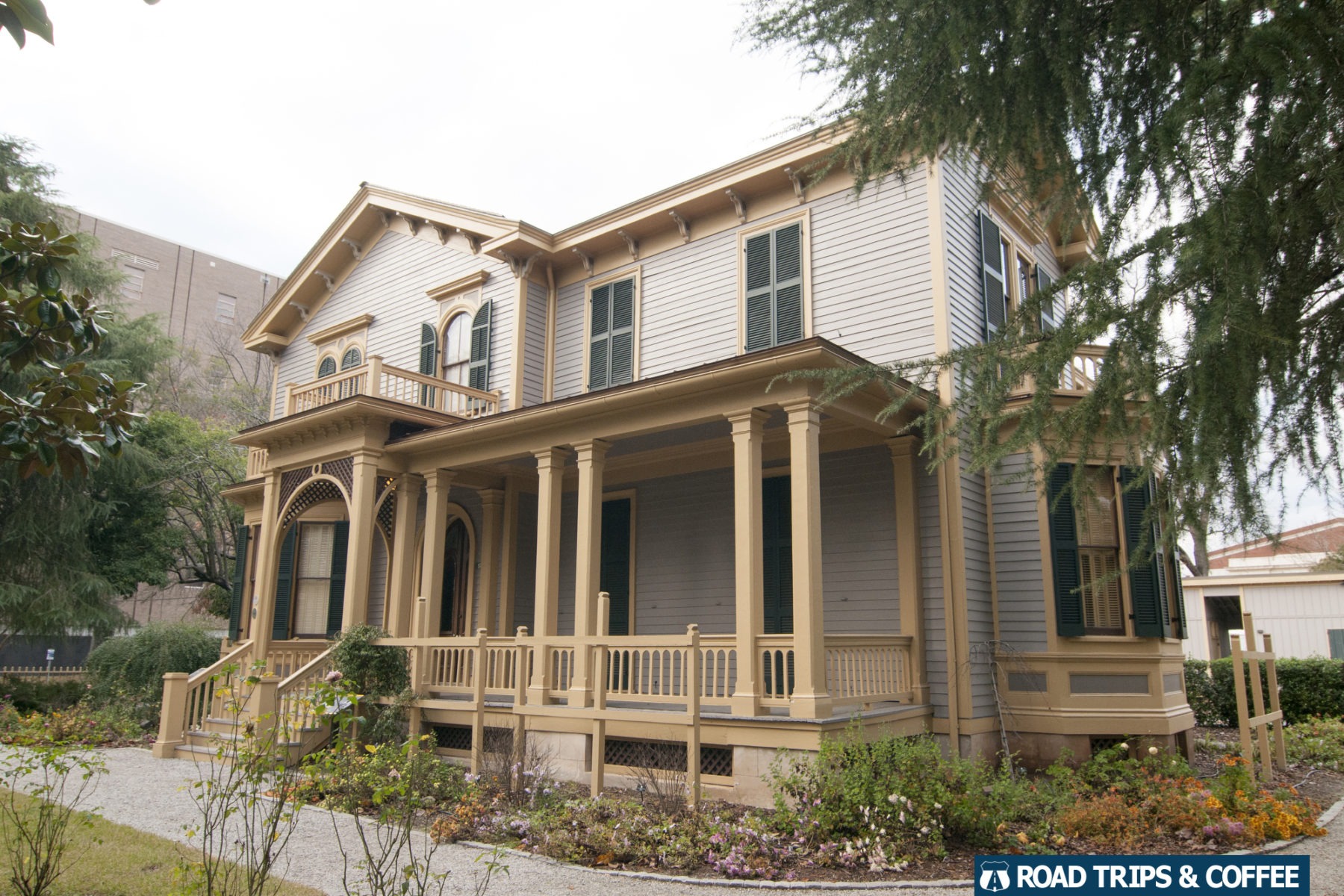
Woodrow Wilson
The Woodrow Wilson Family Home
In 1870 the Reverend Joseph Wilson moved his family, along with 14-year-old Thomas Woodrow Wilson, to Columbia, South Carolina. Joseph and his wife Jessie designed and built a two-story Italian Villa style home where they lived for four years. Today the home is maintained by Historic Columbia and used as The Museum of Reconstruction, displaying exhibits and information on the Reconstruction Era after the Civil War. The home is open for guided tours throughout the week.
1616 Blanding Street, Columbia, SC | 803-252-1770 | https://www.historiccolumbia.org/woodrow-wilson-family-home
Woodrow Wilson
The Woodrow Wilson Presidential Library & Museum
Thomas Woodrow Wilson was born in 1856 in the manse, a term used to describe the residential home owned by the Presbyterian Church for their pastor. The three-story brick house, built in 1846, is maintained today as part of The Woodrow Wilson Presidential Library & Museum. Visitors can take a guided tour of the birthplace home and explore the museum where they will see Wilson’s 1919 Pierce Limousine on display.
20 North Coalter Street, Staunton, VA | 540-885-0897 | https://www.woodrowwilson.org
READ MORE: 7 Intriguing Places to Discover the History of President Woodrow Wilson
Warren G. Harding
Harding Home Presidential Site
The Harding Home was designed by Warren Harding and his fiancée, and future wife, Florence in 1890 in Marion, Ohio. The next year they were married at the house. The Hardings would call this home until 1921 when they left for The White House after winning the election. After Warren Harding died in 1923 and Florence in 1924 the house opened as a museum and has continued since that time. Visitors to the house can take a guided tour and see hundreds of the house after a 2020 restoration to its 1920 appearance.
380 Mt. Vernon Avenue, Marion, OH | 740-387-9630 | www.hardinghome.org
Calvin Coolidge
President Calvin Coolidge Historic Site
This state historic site in Plymouth Notch, Vermont is probably the coolest presidential home site to explore in the country because it’s not just a house, it’s an entire village! The Wilder House, built in 1830, was the childhood home of President Calvin Coolidge’s mother, Victoria Josephine Moor. In 1876 Colonel John Coolidge purchased a one-and-a-half story farmhouse where Calvin Coolidge would grow up. Visitors can take a guided tour of the homes while also exploring the village green, 1840 church, 1890 schoolhouse, and a pre-1835 general store and post office.
3780 Route 100A, Plymouth Notch, VT | 802-672-3773 | https://historicsites.vermont.gov/calvin-coolidge
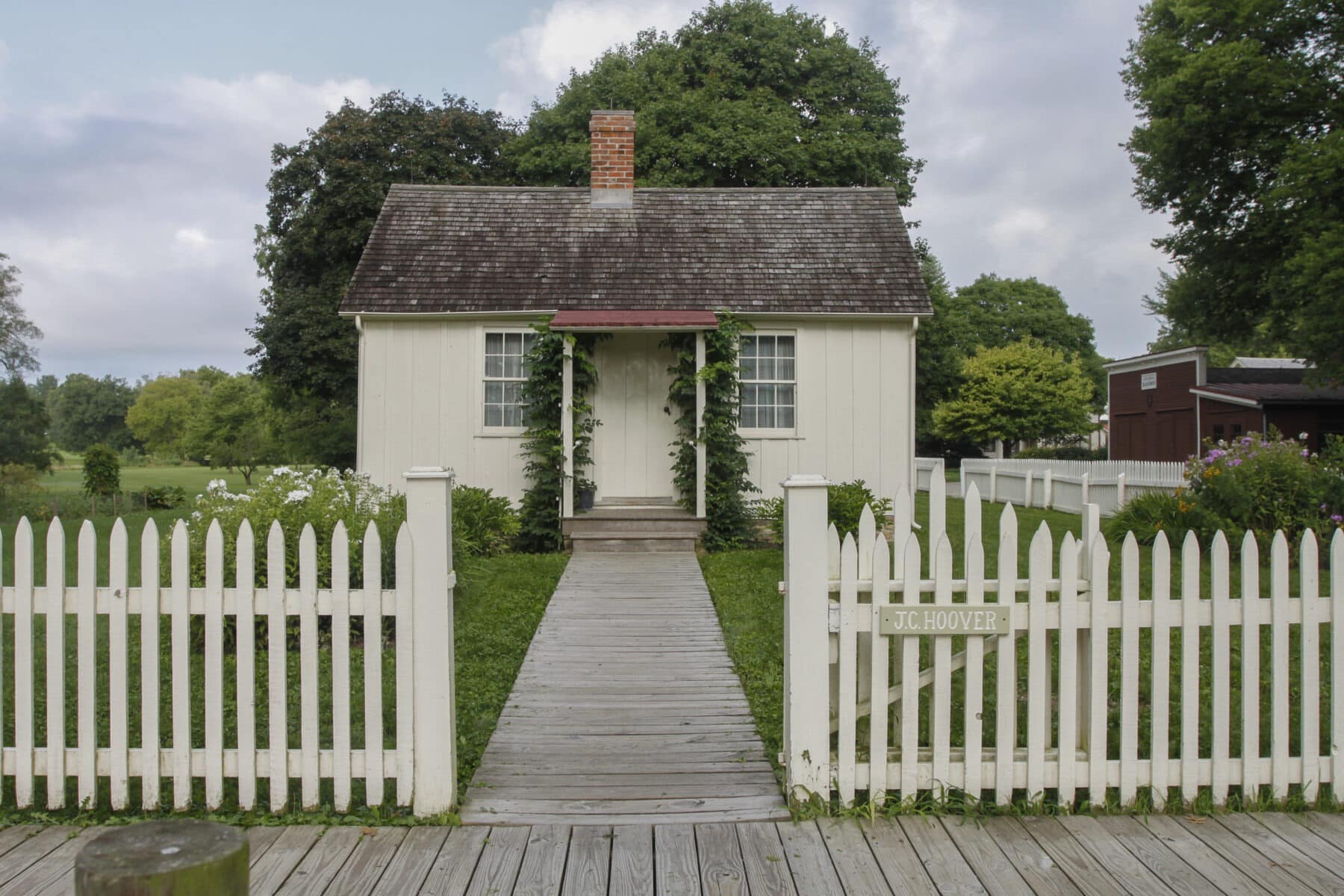
Herbert Hoover
Herbert Hoover National Historic Site
In 1874 Herbert Hoover was born in a tiny two-room cottage. Hoover only lived in the cabin for the first three years of life and after leaving he never returned to live there again. But in 1935 Hoover, along with his wife Lou Henry, purchased the old cabin and restored it. Today visitors to the national historic site can visit the location of the Birthplace Cottage while also exploring the Presidential Library and Museum and visiting Hoover’s final resting place.
110 Parkside Drive, West Branch, IA | 319-643-2541 | www.nps.gov/heho/index.htm
Herbert Hoover
Hoover-Minthorn House Museum
This gorgeous home was built in 1881 by Jesse Edwards, the Quaker founder of Newberg, Oregon. In 1885 Dr. Henry Minthorn moved into the house with his family. Learning of a recently orphaned Herbert Hoover, Minthorn offered to foster the future president. Hoover lived in this house for three years. Today visitors can take a guided tour of the house museum and learn about the Quaker history of the area and people who lived in the house.
115 S. River Street, Newberg, OR | 503-538-6629 | www.hooverminthorn.org
Herbert Hoover
Rapidan Camp
Shortly after Herbert Hoover was elected president in 1928 he began a search for a place to build a retreat within one hundred miles of Washington, D.C. He eventually selected a site at the headwater of the Rapidan River inside what would later become Shenandoah National Park. Hoover spent his own money to purchase the land and building materials for the construction of a small camp including The Brown House, a lodge where he would spend quite a bit of time during his presidency. Today visitors to Shenandoah National Park can participate in a 2.5-hour guided ranger trip to Rapidan Camp to explore several of the buildings.
540-999-3500 | www.nps.gov/shen/index.htm
Franklin D. Roosevelt
Home of Franklin D. Roosevelt National Historic Site
In 1866 James Roosevelt purchased an estate with an Italianate style mansion on the property. In 1882 Franklin Delano Roosevelt was born in a bedroom on the second floor. Springwood, as the mansion was named, would remain his home throughout his life. Just before his death Roosevelt donated the house to the federal government and was eventually transferred to the National Park Service. Visitors to Springwood can take a guided tour of the house and visit the gravesite of Franklin and Eleanor Roosevelt.
4097 Albany Post Road, Hyde Park, NY | 845-229-9115 | www.nps.gov/hofr/index.htm
READ MORE: The Fascinating Franklin Delano Roosevelt Memorial in Washington, D.C.
Franklin D. Roosevelt
Roosevelt’s Little White House
In 1921 Franklin Delano Roosevelt fell ill on family vacation and was later diagnosed with polio. He was paralyzed from the waist down for the rest of his life. In 1932, while governor of New York, Roosevelt built a house in Warm Springs, Georgia, in a hope that hydrotherapy could cure his paralysis. FDR visited several times during his 12-year presidency and died at the Little White House in 1945. Today visitors can tour the Little White House, Historic Pools Museum, and several other buildings on site.
401 Little White House Road, Warm Springs, GA | 706-655-5870 | https://gastateparks.org/LittleWhiteHouse
Harry Truman
Harry S. Truman Birthplace State Historic Site
In 1884 Harry S. Truman was born in a small house in Lamar, Missouri. When he was just ten months old the family moved to Harrisonville. In 1957 the birthplace house was sold to the state of Missouri and two years later President Truman himself attended the dedication ceremony of the new state historic site. Visitors to the site can explore the birthplace home and grounds.
1009 Truman Street, Lamar, MO | 417-682-2279 | https://mostateparks.com/park/harry-s-truman-birthplace-state-historic-site
Harry Truman
Harry S. Truman National Historic Site
From 1867-1885 the gorgeous home in Independence, Missouri at the heart of this park was built by George Potterfield Gates. In 1919 President Harry S. Truman married Gates’ granddaughter, Bess Wallace, and the couple made this their permanent home until 1972. Today visitors can take guided tours of the Truman Home and visit many other historic buildings located around the historic site.
223 North Main Street, Independence, MO | 816-254-2720 | www.nps.gov/hstr/index.htm
Harry Truman
Harry Truman’s Little White House
Originally built in 1890 as housing for naval officers at the submarine base in Key West, Florida, in 1946 the house was used by a president for the first of many times. President Harry Truman spent 175 days of his presidency at the Little White House from 1946-1952. Visitors can take a guided tour of the home to learn about the history of Key West, conversation of the house into the Little White House, and the other presidents who have visited since.
11 Front Street, Key West, FL | 305-294-9911 | www.trumanlittlewhitehouse.com
Dwight D. Eisenhower
Dwight D. Eisenhower Presidential Library, Museum & Boyhood Home
The Eisenhower Boyhood Home is the original house where the Eisenhowers lived from 1898 until 1946, in its exact location, and furnished with items from the family, making it one of the most authentic presidential homes in the country to visit. Visitors to the site can also explore the research library, museum, and watch an orientation film at the visitor center.
200 SE 4th Street, Abilene, KS | 785-263-6700 | www.eisenhowerlibrary.gov
Dwight D. Eisenhower
Eisenhower Birthplace State Historic Site
Dwight D. Eisenhower was born in 1890, the third son of David and Ida. David worked for the Missouri-Kansas-Texas Railway, and the family lived in a rented two-story frame house in a working-class neighborhood. Dwight only spent the first 18 months of his life in Denison before his father was transferred to Kansas, and he never lived in Texas again.
Eisenhower rose to fame as the Supreme Allied Commander of forces in Europe during World War II. In 1946, the City of Denison purchased the old two-story frame house where Eisenhower once lived. A foundation was formed to raise funds for a restoration. Today, the home is owned and operated by the Texas Historical Commission – visitors can take guided tours inside the restored house and learn the early history of the 34th president of the United States.
609 South Lamar Avenue, Denison, TX | 903-465-8908 | https://www.thc.texas.gov/historic-sites/eisenhower-birthplace-state-historic-site
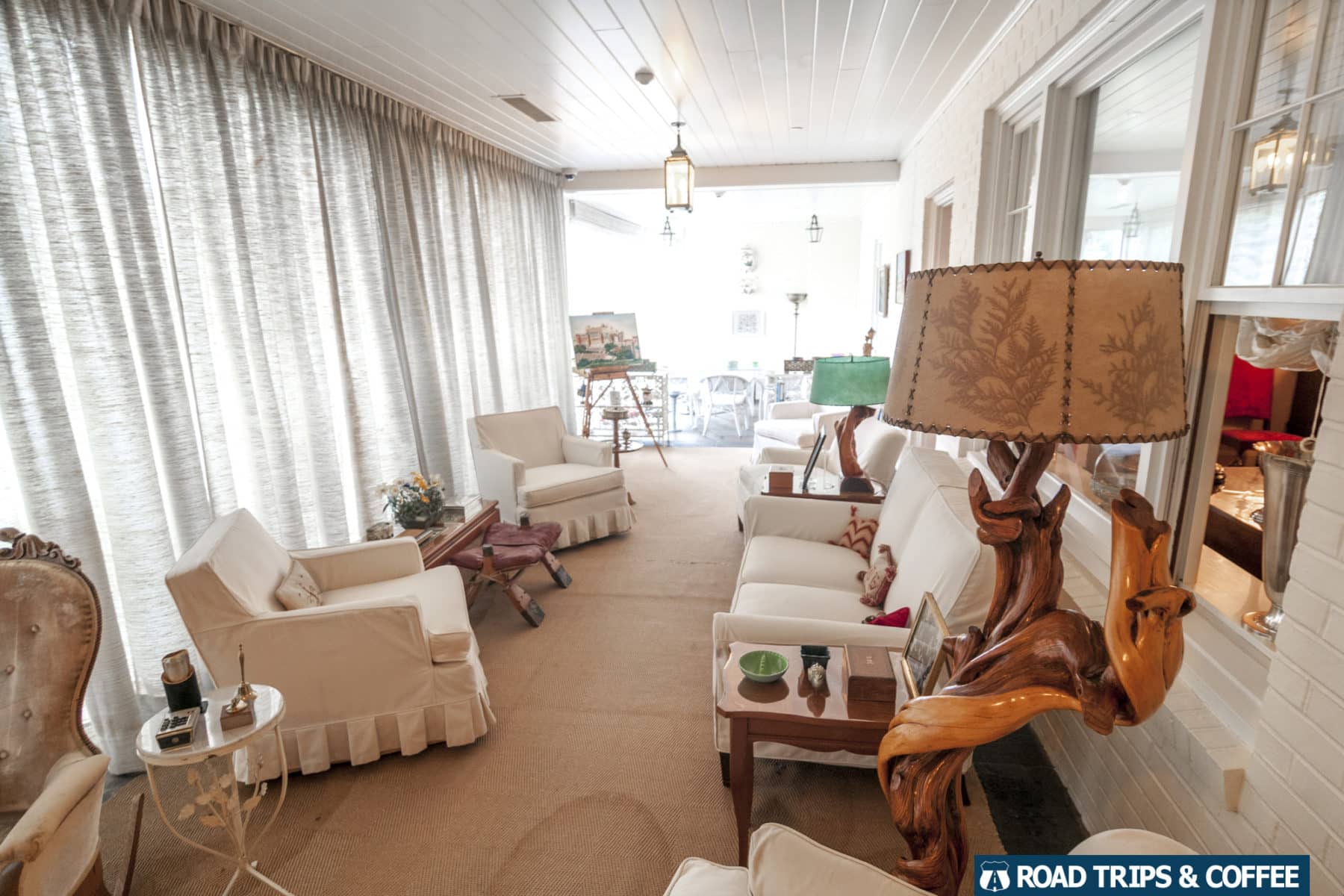
Dwight D. Eisenhower
Eisenhower National Historic Site
In 1950 General Dwight D. Eisenhower purchased almost 700 acres of farmland adjacent to Gettysburg National Military Park in Pennsylvania. After becoming president in 1953, Eisenhower and his wife, Mamie, demolished and rebuilt the main home on the property. After completion of the house he would spend a total of 365 days of his presidency on the property and would retire to the home after leaving The White House. Today visitors can take a guided tour of the house that has been kept furnished and styled as it would have been in the 1960s.
Tours of this historic site are administered through Gettysburg National Military Park.
1195 Baltimore Pike, Gettysburg, PA | 717-334-1124 | www.nps.gov/gett/index.htm
John F. Kennedy
John Fitzgerald Kennedy National Historic Site
In 1914 Joseph Kennedy purchased a five-year-old house on Beals Street in Brookline, Massachusetts. Three years later John Fitzpatrick Kennedy was born in the upstairs bedroom of that house. The family moved out of the house in 1920 but in 1966 Rose Kennedy, JFK’s mother, purchased the house and restored it to the original 1917 condition. Visitors to the historic house can take a guided tour, learning about the Kennedy family and life in America in the early 1900s.
83 Beals Street, Brookline, MA | 617-566-7937 | www.nps.gov/jofi/index.htm
Lyndon B. Johnson
Lyndon B. Johnson National Historical Park
This national historical park has two components surrounding Johnson City, Texas. In Johnson City visitors can take a guided tour of President Lyndon B. Johnson’s childhood home and his grandparents’ log cabin settlement. The second area to explore is the LBJ Ranch, a popular retreat during Johnson’s presidency and his final resting place today.
100 Lady Bird Lane, Johnson City, TX | 830-868-7128 | https://www.nps.gov/lyjo/index.htm
Richard Nixon
Richard Nixon Presidential Library and Museum
Yorba Linda, CA
In 1912, Frank Nixon bought a property in Yorba Linda, California, a suburban city near Los Angeles. He built a modest one-story frame house. The application to the National Register of Historic Places notes, “the house has little merit architecturally; it is typical of the small California types of dwellings is often built by itinerant carpenters.”
The following year, Richard Nixon was born. He spent the early years of his life growing up in the small house until the family ranch failed in 1922, and they moved.
In 1990, the Richard Nixon Presidential Library and Museum was dedicated before a crowd of 50,000 guests and Presidents H.W. Bush, Ford, and Reagan. The 52,000-square-foot facility contains many of the presidential records Nixon initially sought to destroy, leading to Congress passing the Presidential Recordings and Materials Preservation Act.
The small frame house remains behind the library and museum on the 9-acre site. Visitors can explore the exhibits in the museum, see President Nixon’s Helicopter, and visit the birthplace house.
Jimmy Carter
Georgia Governor’s Mansion
Savannah was Georgia’s first capital, followed by August, Louisville, and Milledgeville. In 1868 – nearly 80 years after the state was founded – the capital was moved to Atlanta. In 1870, the state purchased a Victorian-style home from John H. James for the city’s first governor’s residence. After housing seventeen governors the rundown house was demolished. In 1925, the state purchased the estate and mansion of Edwin Ansley where the next eleven governors lived. But that house was also demolished.
Finally, in 1967, the state of Georgia decided to build a governor’s residence. Located on 18-acres of land that belonged to former Atlanta mayor Robert Maddox, the 24,000 square foot home was dedicated a year later. Designed by Georgia architect A. Thomas Bradbury, the three-story Greek Revival-style house features thirty rooms and 24-foot-high columns made from California redwoods.
Elected in 1971, Jimmy Carter was just the second governor to live in the mansion. Carter lived in the mansion throughout his single term as governor, and just two years later was elected the 39th president of the United States.
Guided tours are offered free of charge on select days of the week throughout the year.
391 West Paces Ferry Road NW, Atlanta, GA | 404-261-1776 | https://gov.georgia.gov/governors-mansion
Jimmy Carter
Jimmy Carter National Historical Park
In 1928, Earl Carter moved his family, including a four-year-old Jimmy, into a three bedroom house in Plains, Georgia. Jimmy lived in the house for thirteen years until he attended college in 1941. After a multiyear restoration, the National Park Service restored the house to its 1937 appearance. Today, visitors can take a self-guided tour of the boyhood home of Jimmy Carter, the 39th President of the United States.
300 North Bond Street, Plains , GA | 229-824-4104 | www.nps.gov/jica/index.htm
Ronald Reagan
Ronald Reagan Birthplace Museum
President Ronald Reagan was born in 1911 in an apartment above a bakery in Tampico, Illinois. He only lived there four months before his family moved into a house down the street. Today the second-floor apartment has been restored and the first floor restored as an early 1900s bank. Visitors can take guided tours of the apartment beginning at the gift shop next door.
111 Main Street, Tampico, IL | 815-622-8705 | www.tampicohistoricalsociety.com/R_Reagan_Birthplace_Museum.html
Ronald Reagan
Ronald Reagan Boyhood Home
Throughout the 1920s the family of President Ronald Reagan lived in this small house in Dixon, Illinois. Visitors today can take guided tours April – October to see the home where Reagan lived as a young boy and learn about his history in the small town.
810 S. Hennepin Avenue, Dixon, IL | 815-288-5176 |https://reaganhome.org/
George W. Bush
The George W. Bush Childhood Home
In 1951 George H.W. Bush spent $9,000 to buy an 11-year-old house in Midland, Texas. For the next four years the house would be home to President George H.W. Bush, his son President George W. Bush, and his other son Florida Governor Jeb Bush. Today visitors can take a guided tour of the childhood home and explore the life of the Bush family in 1950s Texas.
1412 West Ohio Avenue, Midland, TX | 432-685-1112 | http://www.bushchildhoodhome.org/
George W. Bush
Texas Governor’s Mansion
Texans wasted no time in building a permanent residence for their governor – Texas was admitted to the union as the 28th state in in 1845, and just eleven years later the Governor’s Mansion was completed.
The Greek Revival-style house was built by Abner Cook – many of the bricks came from his clay pit on the Colorado River. The 6,000 square foot home featured four bedrooms, but not a single bathroom. A 1914 renovation of the house added an additional 3,000 square feet of living space and seven bathrooms.
Since its completion in 1856, the Governor’s Mansion has been the primary residence of every Texas chief executive and their family. In 1994, George W. Bush was elected governor. He lived in the mansion with his family from 1995-2000, until he resigned midway through his second term as governor when he was elected the 43rd president of the United States.
Visitors to the Texas Governor’s Mansion can a free guided tour of the residence and grounds on select days of the week throughout the year. A background security screening is mandatory for all visitors, so tours must be booked at least a week in advance.
1010 Colorado Street, Austin, TX | 512-463-5518 | https://tspb.texas.gov/prop/tgm/tgm/mansion.html
Bill Clinton
Arkansas Governor’s Mansion
In 1836, Arkansas became the 25th state admitted into the union. Over one hundred years later, in 1947, the state legislation established a commission to build a residence for the governor. Design by architects Frank J. Ginocchio, Jr. and Edwin B. Cromwell, the two-story Georgian Colonial-style house was completed in 1950. In lieu of a dedication ceremony, the Governor’s Mansion was opened to the public for guided tours – over 180,000 people visited during the week-long event.
When Bill Clinton was elected in 1978 at the age of 32, he was the youngest governor in the country at the time. He served a term from 1979-1981, and then another five terms from 1983-1992. Clinton left the Governor’s Mansion when he was elected the 42nd president of the United States in 1992.
Visitors to the Arkansas Governor’s Mansion can take guided tours of the residence or self-guided tours of the gardens. Tours are offered on select days throughout the year – check their website to book a tour in advance.
1800 Center Street, Little Rock, AR | 501-324-9805 | https://governor.arkansas.gov/arkansas-governors-mansion
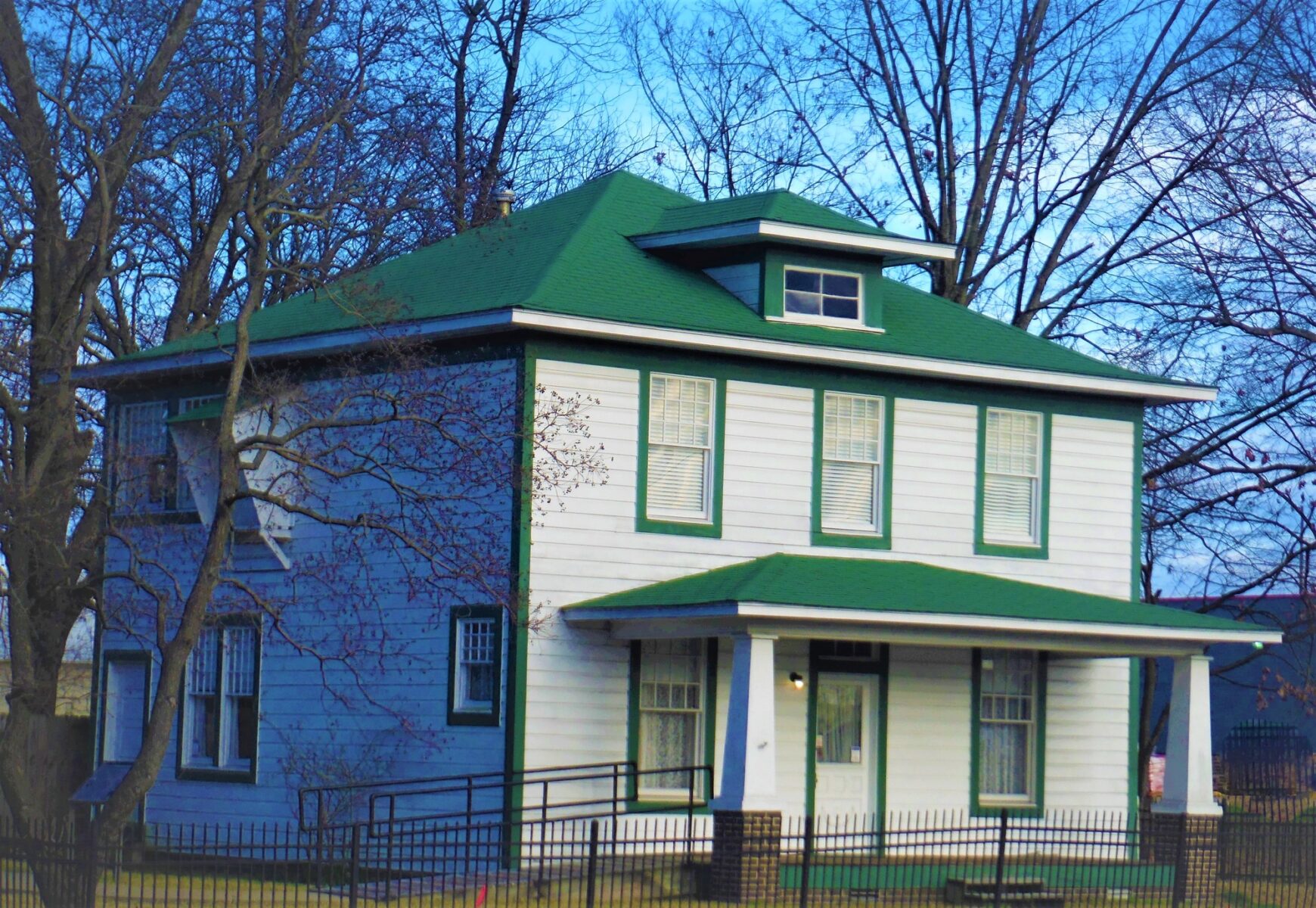
Bill Clinton
President William Jefferson Clinton Birthplace Home National Historic Site
At this small National Parks site in Hope, Arkansas visitors can explore the two-story home where President Bill Clinton grew up. Begin at the visitor center for a walk through of Clinton’s life in a small museum, then take the guided tour of the birthplace home next door.
117 South Hervey Street, Hope, AR | 870-777-4455 | https://www.nps.gov/wicl/index.htm
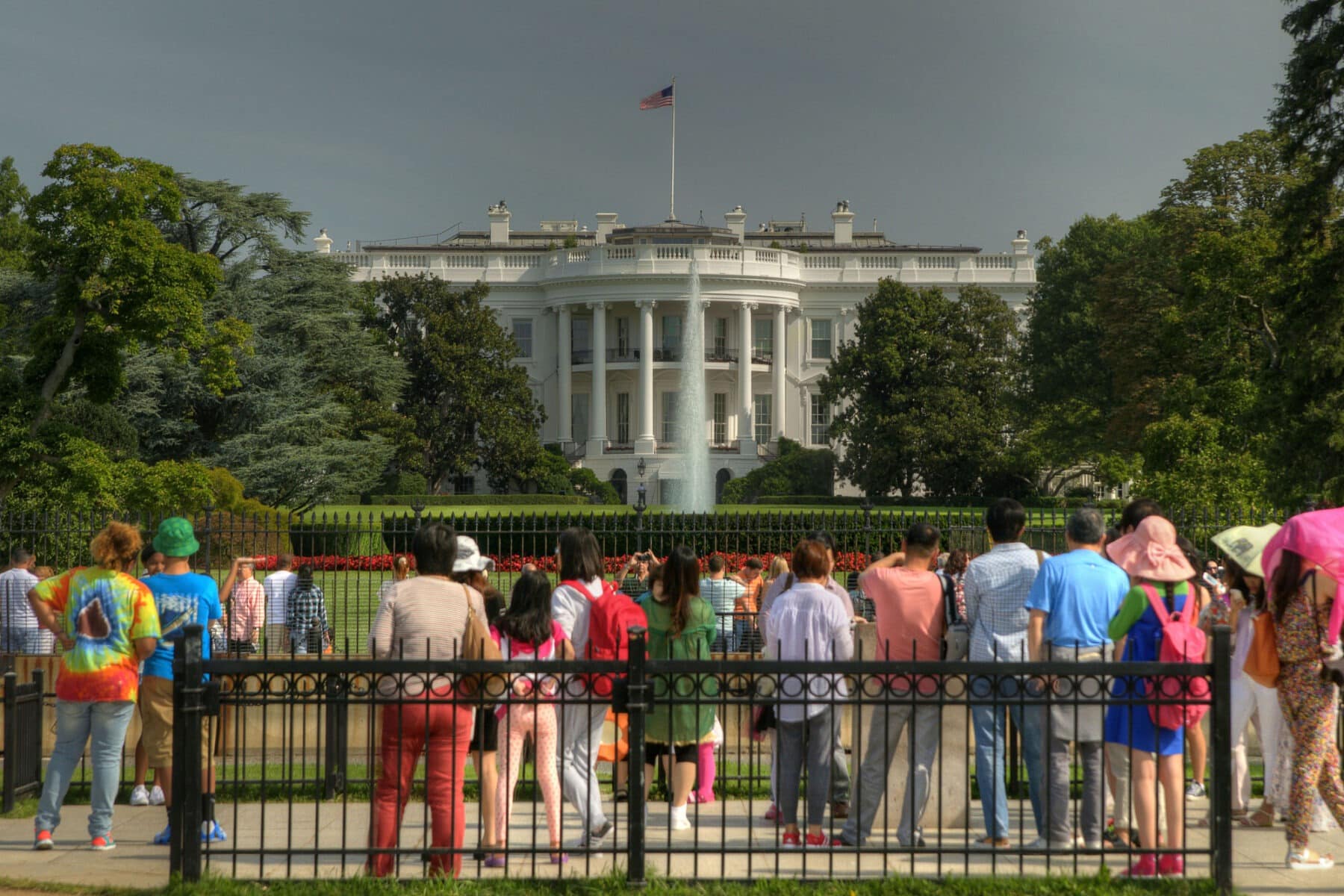
The White House
I couldn’t write a list of presidential homes without mentioning the residence of the current president, even though it’s owned by the people. From 1792-1800 The White House was built in the newly designated Federal district of Washington, D.C. On November 1 of that year John Adams became the first president to occupy The White House. Guided tours are offered, but it takes a bit of effort. Anyone hoping to tour The White House must submit a request through their Member of Congress.
1600 Pennsylvania Avenue, Washington, DC | 202-456-7041 | www.whitehouse.gov/about-the-white-house/tours-events


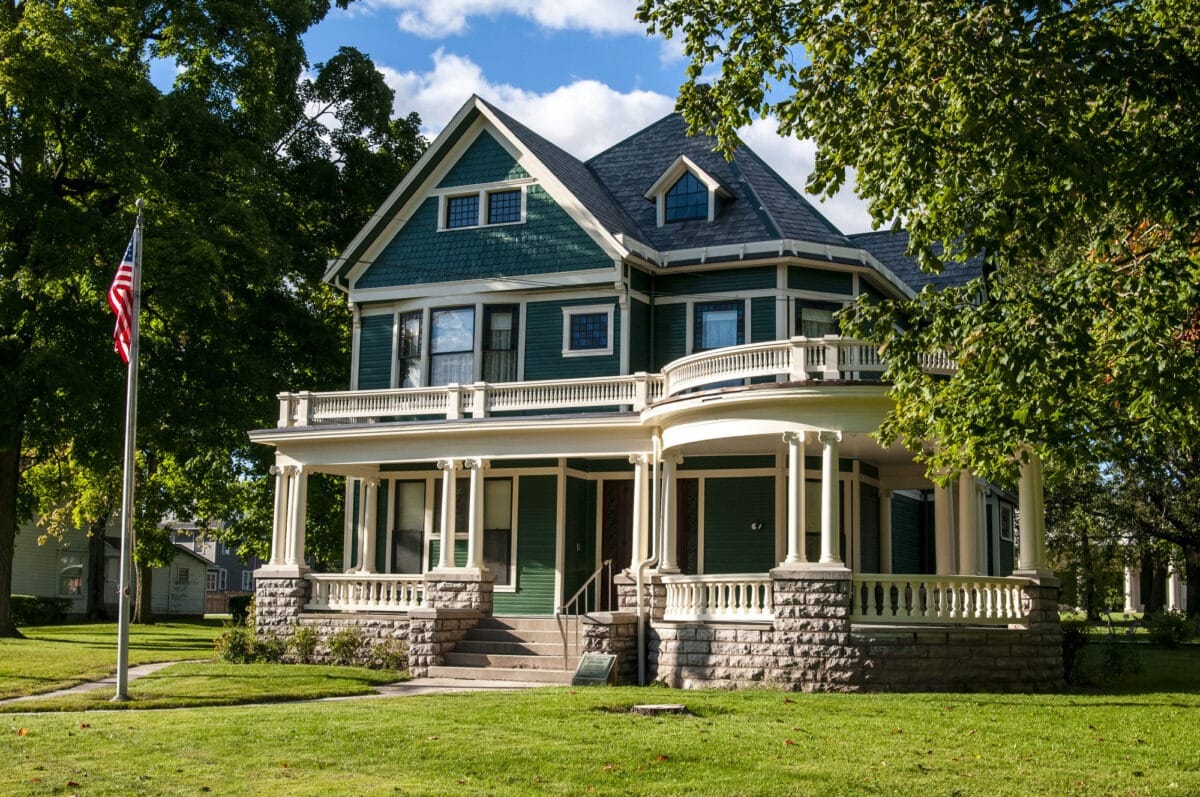
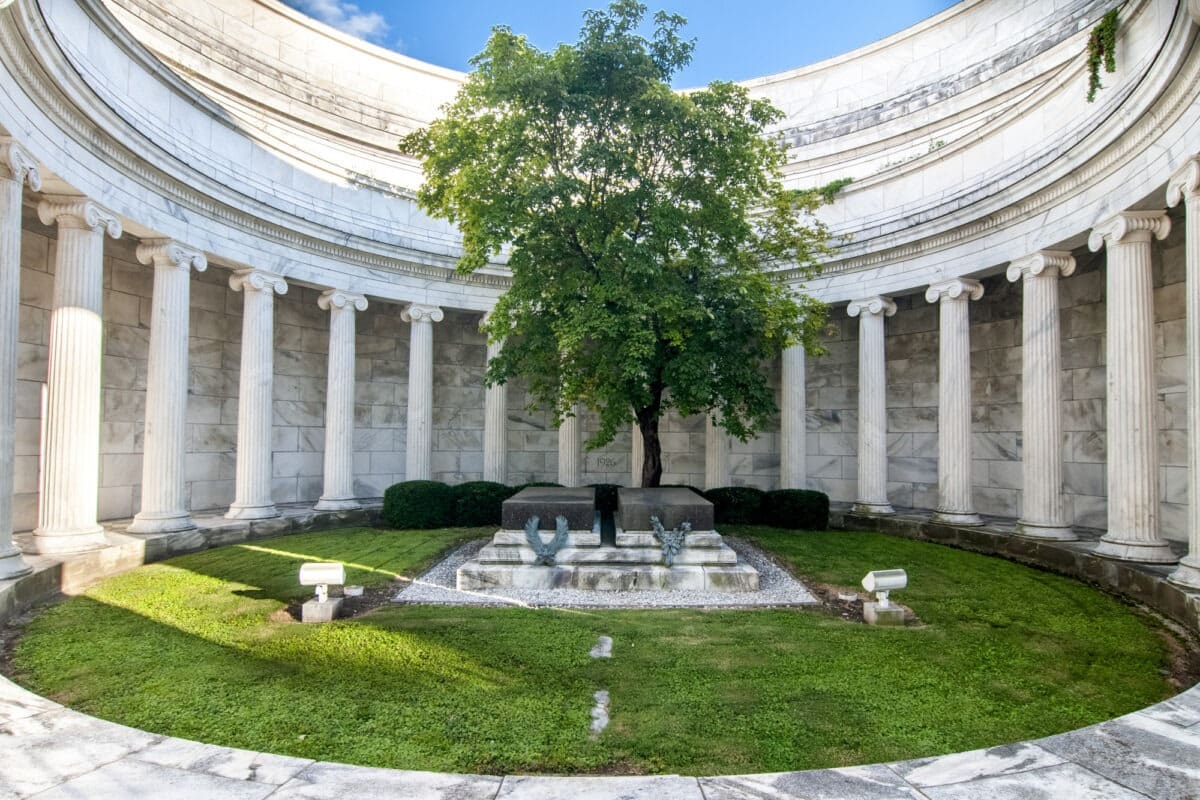
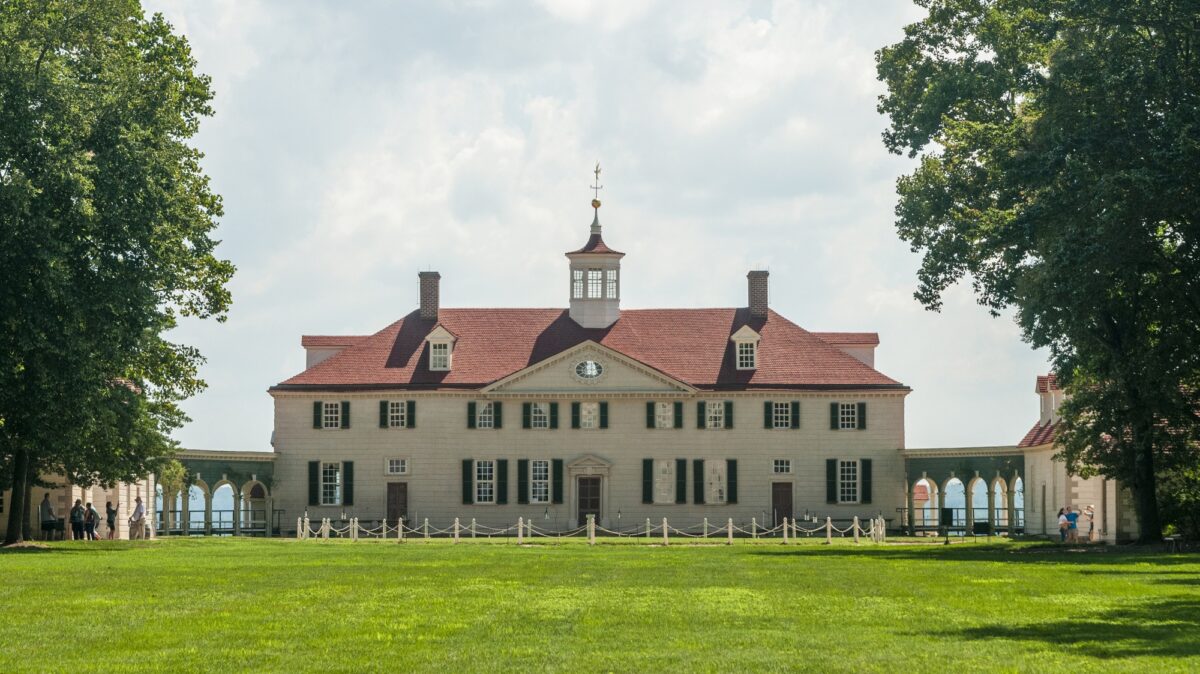


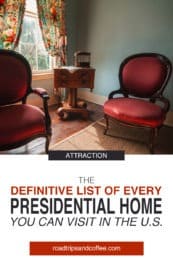
23 Responses
James Buchanan died in 1868 at age 77 of respiratory failure
Mario, thank you for letting me know. I have corrected my error. I did not vet the information in this article like I normally would because it was such a complex topic. But, it looks like I did to polish this again. Thank you!
Is the Nixon birthplace in California not the original structure? I did not see it on the list.
At the time I wrote the article, the foundation that owns the house had closed it to the public. They had posted a notice that it might open again in the future. I will check into it and update the article if it’s open again.
I have been to several of these homes. My goal is to see as many as I can. Going to The Hermitage soon. Looking forward to it. Thanks for this great list.
Its also one of my goals now to visit every site on this list. I’ve been to Nashville twice and still haven’t visited The Hermitage, though. Have fun!
I didn’t see the James K Polk childhood home in Pineville, NC. It is open for visits. Great list, we love US history and this helps keeps the kids interested and the best way to help them connect with what they are learning.
Hi Mary! This list only includes original presidential homes. The house at the James K. Polk State Historic Site is not original – it was reconstructed from two nearby barns. So you can visit the land where he was born, but you can’t walk the same hallways he walked.
This is a great and informative list! I just wanted to tell you, you left out the Jimmy Carter boyhood farm in Georgia.
You’re right, Carson! Thank you so much for letting me know. I did research for days trying to find all these sites – but I still missed a few. I have updated this article. Thank you!
Hey! I looked some more, and saw you didn’t include James Monroe’s Highland in Virginia, the Zachary Taylor home in Louisville, The Theodore Roosevelt Birthplace in New York, and the Octagon House in Washington, D.C. I’m trying to reach out to you so that I can hopefully use this list to travel to some of these sights when I’m nearby. Thank you!
Carson, I did not include Highland because the original house where James Monroe lived burned to the ground in 1829. The Zachary Taylor Boyhood Home is a private residence and not open to the public for tours. I did indeed miss Theodore Roosevelt Birthplace National Historic Site and will add that to the list as soon as possible. I may eventually include The Octagon House, but currently – since early 2020 – tours are only given to groups of 5+. Thank you for keeping me updated on everything! I still have not included the homes where presidents lived while they were governors – it’s on my to do list.
Great job! Been to about 30 sites. For another road trip, Route 66 is great. The people I have met are fantastic and helpful. This trip is really a great way to see America!
Rick, to be honest I may never drive Route 66. It’s been done to death haha. But I will eventually drive all the backroads across America.
Glaring omission! You have left out two Gerald R. Ford sites in Michigan. The Presidential Library in Ann Arbor and the Presidential Museum and Burial Place in Grand Rapids.
Susan, this is a list of presidential homes you can visit – Ford never lived at either of the sites you listed.
Hi Jason, a great list, thanks. Just informing that the Theodore Roosevelt Birthplace is actually a reproduction. There was only 7 years between the original building being torn down and the reproduction (the shortest time span between an original and a reproduction), so it’s likely to be a faithful reproduction due to recent records at the time the reproduction was built, but still a reproduction nevertheless. (See the book by Louis Picone “Where the Presidents Were Born”.) Cheers, Michael
Lincoln also has a boyhood home in Indiana and his birthplace in Kentucky.
The Lincoln boyhood home in Indiana no longer exists. The Lincoln Boyhood National Memorial is nothing more than a marker. At the Abraham Lincoln Birthplace National Historical Park in Kentucky there is only a symbolic recreation of the cabin he was born in. I only included actual homes in this list; no recreations or memorial markers.
And what about all the state mansions of all the Governors who became president?
After reading your comment I thought about it, a lot, but decided not to add the governor’s mansions to this list. I mostly decided not to do it because it would have added an additional 15 items to this already massive list. But I also wanted to keep this list to private homes with one exception: the White House.
Thank you for this list. By my count I have visited 46 of these homes! I always enjoy your posts.
You’ve been to FORTY-SIX of these homes? Good grief that’s awesome! Thank you for being such an amazing fan of my travel writing!